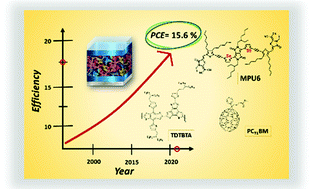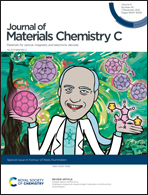Abstract
A new non-fullerene small molecule acceptor (MPU6) containing a diketopyrrolopyrrole (DPP) acceptor unit as the core, connected to dicyanomethylene-3-ethylrhodanine end-capped units via thienylethynylselenophene bridges, has been designed and synthesized and its optical and electrochemical properties have been examined. MPU6 has been used as an acceptor along with a wide bandgap polymer (TDTBTA) as the donor for solution-processed bulk heterojunction polymer solar cells, thus resulting in a power conversion efficiency (PCE) of 13.14%, which is higher than that obtained when PC71BM is used as the acceptor (6.69%). The increase in PCE for the MPU6-based polymer solar cell is due to the increase in both VOC and JSC, while the FF is lower than that for PC71BM. In addition, PC71BM has been used as a second acceptor to form ternary PSCs, thus achieving a PCE of 15.60%, which is significantly higher than those for the binary counterparts. The increase in PCE for ternary PSCs may be linked to better charge transport and energy transfer, which leads to better utilization of excitons and also leads to the enhancement of JSC and FF.

- This article is part of the themed collections: Special issue in honour of Kees Hummelen and 2021 Journal of Materials Chemistry C most popular articles


 Please wait while we load your content...
Please wait while we load your content...